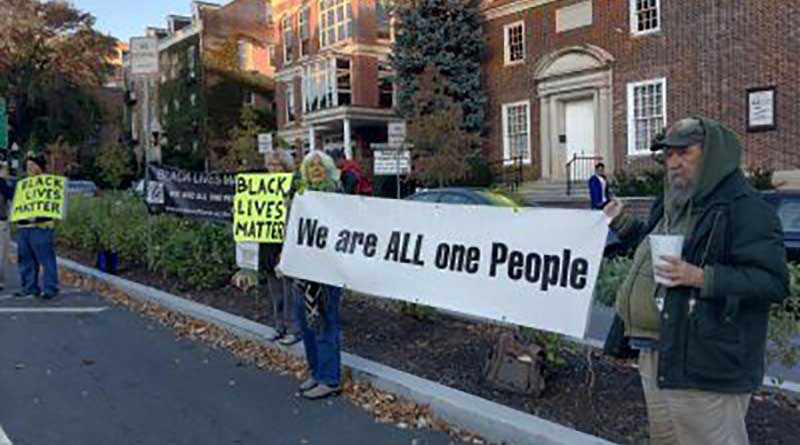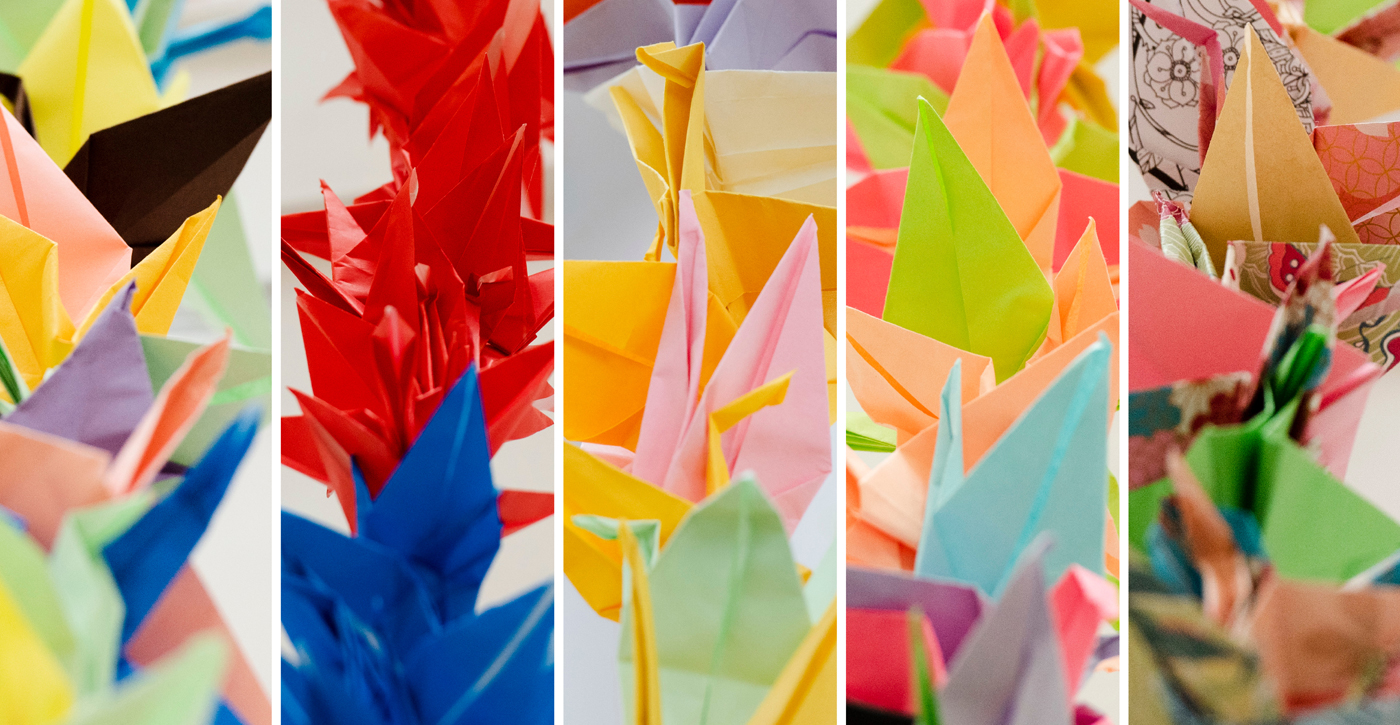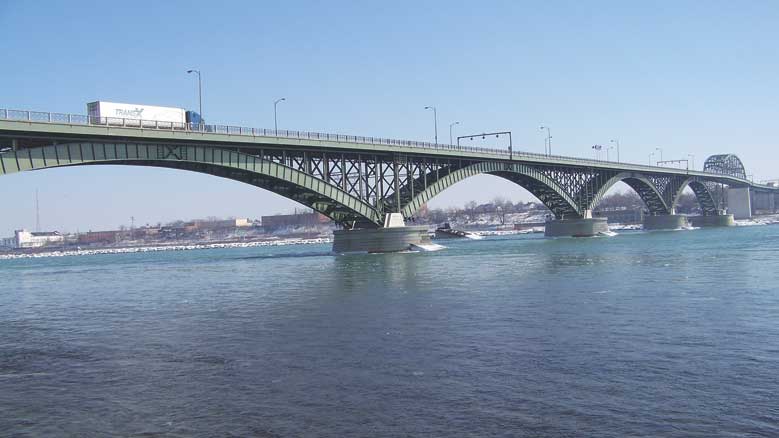After midnight, even on an unseasonably mild November evening, the late-working staffers have gone home and the tourists are back in their hotels. Pennsylvania Avenue outside the White House is left to the police; to the peace camper, asleep in his tent in Lafayette Park; and to the homeless man, writing steadily in his notebook. And to me, one Friend, walking back and forth all night in a vigil for peace. The words of the traditional Welsh hymn, printed in Friends General Conference’s Worship in Song: A Friends Hymnal, spoke to me that night:
Guide me, O, thou great Jehovah,
Pilgrim in this barren land.
A powerful hand had surely been holding me and guiding me to that vigil in 2006 for some time. In October 2004, The Lancet, one of the top general-circulation medical journals, published an article estimating that almost 100,000 excess deaths had occurred in Iraq since the start of the war some 18 months before. My areas of professional expertise are in biostatistics, epidemiology, and population-based studies, and I believed these researchers had done a competent professional study under extremely difficult conditions. I don’t know which upset me more: how few people had heard of this report, or how few of those believed it or cared about its findings. I organized a panel discussion for students and faculty at University of California, Davis, and the seminar had the best attendance and liveliest discussion of any in years; people stayed for an hour afterwards. But I grew increasingly frustrated as the war went on, violence grew, and U.S. and British leaders kept repeating that conditions were improving, victory was at hand, and that we had to stay the course. Then The Lancet published a second article. The same research group found that the total of excess deaths had grown to 655,000, around 600,000 of those by violence. That’s about the population of Boston. How could we dismiss the deaths of more than half a million people as "collateral damage"? What could I do?
An image came to me of an all-night walking vigil at the White House. But it was so far from my home in California—except, perhaps, for that upcoming National Institutes of Health study section usually in Bethesda, just a Metro ride from the White House. Then the NIH officer in charge of the study section called me about travel and hotel reservations. "Should I fly to Baltimore," I asked? "Oh, no," she said; this time we would be meeting downtown. "It will be very convenient," she said, "only two blocks from the White House!" Hmm, I wondered, could God be trying to tell me something?
I was skeptical about the whole idea, though. I tried to set it aside, but my Guide had other ways to speak to me. I complimented a Friend for the beautiful flowers he’d arranged for another Friend who was in hospice care. "I heard this voice asking me to do them today so she could enjoy them, to not wait until her memorial," he told me. He went on to tell me how he’d tried to ignore the voice because he was busy, but he remembered a query just the day before on obedience. He felt so much better, he said, once he realized he needed to obey.
The next week I was in Chicago and attended Oak Park Meeting. The first woman who spoke during worship felt moved to talk about Jonah and how resistant he was to going where God had told him to go. Okay, I said to myself, maybe I’d better think about this seriously and ask for a clearness committee when I get back.
Time was short, but with the help of Friend Marilee, who shared my story with Worship and Ministry/Oversight, a group of four Friends came to my house that Friday evening. They asked some hard questions: What did I plan to do? What would I do if people talked to me? Was I prepared to be arrested? Who would I have for support? How was I preparing? Many of their questions had not occurred to me, but the answers came as we sat together in silence. They had much practical advice, lent me books, gave my plan their blessing, and promised to hold me in the Light. I shared my plan with our meeting that Sunday and left for D.C. knowing I had the caring support of many Friends.
Our study section absorbed my attention all day. I had dinner with my sister, who lived nearby; walked back to my hotel; and changed into my walking clothes: a dark sweatshirt with silver lettering saying "Walk in the Light" on the front and "Peace is the Way" on the back, and a pair of old but comfy running shoes. Then I was off to the White House to walk mindfully and pray for an opening towards peace.
Tourists were still taking pictures along the fence even after 10 pm; people in business suits left offices late and walked by on their way home, and the night cleaning staff were just arriving. "Let the way open," I prayed. I tried to imagine flowers springing up in my footsteps, and seeds floating out like dandelion fluff and being borne through the fence to waft into the White House, to be nurtured by prayers for peace. Sometimes I walked in silence, trying to open myself to God, and sometimes I sang softly:
Open now the crystal fountain,
Whence the healing stream doth flow.
And while I walked and watched the White House through the fence, the police were watching me. The White House is layered and festooned with guards and barriers. The tall wrought-iron fence has guardhouses and double and triple gates, and the street is guarded by double rows of waist-high concrete bollards with still more guardhouses and police. Police stand in the street, walk up and down, drive through or park in their cars and vans, and ride around the block on street bicycles that look like they belong on small-town bike paths, not downtown D.C. streets. You can see the snipers on the roof sometimes, against the night sky, when they stand up to stretch.
Three police came over, after an hour or so, to ask what I was doing. "We noticed you walking back and forth," one said.
"Yes, I’m walking tonight on a prayer vigil. I’m a Quaker, here to pray for peace."
They nodded politely. One said, "Oh, yes, my in-laws are Quakers, I know about them."
They wondered how long I might be out walking. Perhaps all night, I told them. "It might not be safe out here late at night," they warned. "This isn’t California."
"I’ve lived in New York and Boston and Chicago," I answered. "And in all my years, the only people who’ve ever caused me any grief were white guys in business suits with faculty appointments in schools of medicine or engineering.
If you see one walking by, let me know; otherwise, I’m trusting that I’m supposed to be here and I will be fine walking and praying." The words to another hymn from Worship in Song rang in my mind:
When I tread the verge of Jordan,
Bid my anxious fears subside.
"Well, if you see anything that’s a problem, let us know," they requested. I said I would, though in fact the worst problem I could see on Pennsylvania Avenue was that the White House was surrounded by guards like a maximum-security prison.
That thought led me to a little epiphany as I walked back and forth: I was outside the prison bars and I could walk freely.
I had struggled for six years to see the Light within George W. Bush. I believed intellectually that it was there, but I so despised his policies, his wars, his trashing of science and healthcare, the corruption of his appointees, the lust for power that seemed to drive those who surrounded him that I could hardly stand to hear his voice on NPR. But outside the White House, for the first time, I was moved to see a real person. He was inside; lights went on upstairs and then went off. I could smell the fabric softener from some basement laundry room. And I realized that even if he wanted to come out and walk on the other side of the fence from me, under those great trees with their golden leaves falling on the sidewalk where I was walking and on the lawn inside, he couldn’t. He’d have to ask permission, get the Secret Service organized, and probably would be told he couldn’t stroll in the garden on this beautiful, calm evening. No wonder, I thought, that he spent a third of his Presidency back home in Crawford. I had a sense of warmth and caring, for the first time, for someone who liked to get out in his yard just as much as I do, and who was shouldering a burden he probably couldn’t have begun to imagine, and who was locked behind walls, gates, and guards.
So I walked on, thinking now of George W. Bush and the Light within him, inside the White House, and tried to envision those seeds of peace reaching him through the bars, past the guards, and through the windows while he was sleeping. But where would those seeds find a place to grow?
The seeds of peace need a little crack in that smooth façade, I thought, and then I saw the opening. That very day, the foundations of the Administration had been shaken by the news that the Democrats would control not just the House but the Senate, too. Friend George W. Bush, I thought, Thee has been handed a great gift! I don’t suppose George W. Bush saw the 2006 election results as a gift, but how else could he have such an opening for a way toward peace?
Deep in the night, I walked back and forth. I held in the Light the image of the seeds of peace, finding a place for the first time in the shaken-up foundations, nurtured by the prayers of friends and Friends and people around the world who believe there truly is a better way. The sky lightened, the first joggers appeared, then the dog-walkers, and then early-to-work administration staffers in their dark suits. I walked around the White House one last time. Before I left, I stopped to chat with the man who has been camped across the street from the White House by Lafayette Park in a vigil for peace for more than 20 years.
He told me how George W. Bush occasionally goes to church on the other side of Lafayette Park. "First they tow all the cars away," he explained, "and there are police and military guards stationed the whole way. There are snipers on the roofs. They use a motorcade of 17 or 23 cars." I don’t suppose that routine allows much chance for the silence Friends cherish to open ourselves to the Light. But I believed inside those lighted windows upstairs in the White House, George W. Bush was hoping that night for an opening, a way out of the prison of war. What could we as Friends do to help?
I believed we needed to care tenderly for the Light in George W. Bush. My struggles to do this were utterly futile before my walk. I am thankful beyond measure for the grace that lifted the burden of contempt and loathing that I carried before.
Second, I believed we needed to speak truth to power, more than ever. And I believe we still do. There is no way to peace; peace is the way. We need to call for people of peace to be brought into the White House, Congressional, and public discourse on how to find our way out of the crisis of war. We need to speak out and write letters and lend our support to those who are trying to bring peacemakers to the fore. We need to sow and cultivate those seeds of peace as widely as possible.
And finally, I believe that we as Friends must heed the promptings of the Light. We are blessed to have a tradition that teaches us, and a community that supports us. We may not know where our walk will lead us, but we need to have faith when we are being led.




